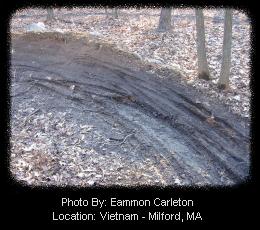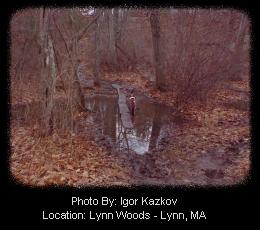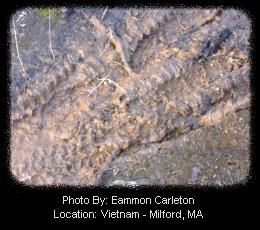|
Mud Season…Time to let the
trails dry out!
It’s that time of the year! You
go outside, the snow is melting, the temperature is in the mid 50s, the sun
is shining bright and the itch to hit the trails on your mountain bike is
overwhelming. Does this sound like you? Well you’re not the only
one that feels this way. Just about everyone who loves the outdoors
feels this way once the first sign of spring is upon us. But even
though the weather conditions are great and you are ready to hit the trails
with your mountain bike...are the trails ready for you?

The answer to this question is
simple…but yet also complex. If you analyze this question from one’s
personal opinion, their answer will depend on what recreational activities
interest them. Mountain Bikers, Equestrians, (the list can go on and
on) and Land Managers will all have different opinions about this time of
the year we at Dieselbikes are calling "Mud Season".
In general, many Land Managers would
like to have all park users (this means everyone) not utilize the trails
during this transitional thaw period from winter to spring. Many
Mountain Bikers feel their bikes are made to ride in the mud and any
environmental trail damage is blown way out of proportion. Many
Equestrians feel these rules do not apply to them since their recreational
park use is of minimal impact.
If you analyze this question looking
at the environmental impact resulting from recreational trail use during
"Mud Season", then you open up a whole new can of worms. Trail impact
studies, environmental surveys, political turmoil and civil unrest between
different park user groups become the norm that everyone must deal with.
When such civil unrest becomes prevalent on multi-use trails, mountain
bikers are usually the "User Group" that gets restricted and/or (in some
cases) expelled from the park all together.

The truth of the matter, regardless of
user opinion and political turmoil, if you’re on a trail that is muddy, you
are causing environmental damage. Different recreational activities
will result in more or less trail damage, but this fact applies to everyone.
Since land managers can not stop everyone from using their respective parks,
rules have been created to maintain some form of trail protection.
Some rules may be foolish like; "why can we not bike during the winter when
the ground is frozen", or "why are we just limited to one mountain bike loop
that is mostly fire road?" But these are the rules.
Here in Massachusetts the mountain
bike community is fortunate to have many parks (public and private) open
year round to mountain biking with few closed during the winter months and
even fewer completely off limits to mountain biking. But regardless a
park is open year round to mountain bikers, this particular time of the year
(March – May) is a sensitive period for our favorite trails. Soil
type, wet weather conditions and melting snow all make the trail thread
soft. When you ride your bike on a muddy trail and/or a section of
mud, your tires act like a knife cutting into the trail leaving ruts.
These ruts then fill with water and over time erode the trail to a point
that it becomes unappealing to all park users…even mountain bikers!

All this boils down to having some
common sense. Every year the mountain community goes through the same
drill about wet trail conditions. Every year Mountain Bike Advocacy
groups come under fire because of bikers whom have that; "I don’t give a
S@#T attitude." Again, it’s having some common sense when riding wet
muddy trails. No one is telling the entire mountain bike community
that you can not ride your bike during this time of the year. If the
park and or trail is closed, then all we can ask is that you follow the
rules as best as possible and become part of "The Solution" instead part of
"The Problem" as perceived by non-mountain bikers. If the trails are
open and you see a muddy section, try to avoid it or make best efforts to
cause minimal trail damage. Better yet, take a picture, mark that
section on a trail map and contact your local bike advocacy group whom works
to maintain those trails and help them repair that muddy section before it
turns into an environmental problem. The solution is that simple.
Lynn Woods is a perfect example of
mixed trail conditions. When Lynn Woods officially opens on April 15th
the condition of its trails will still be in a somewhat sensitive state.
Regardless of the all the "ROCK" Lynn is known for, the majority of trails
still will be soft and some sections completely muddy. We at
Dieselbikes are addressing these "soft" trail sections with Park Management.
Our goal it to eliminate as much sensitive trail sections, while maintaining
a balance with other park users.

Bruce and Tom’s in Gloucester and
Vietnam in Milford are two other locations that contain mixed trail
conditions, but also have a number of private land owners that add to the
sensitivity of the trail system. Hundreds of volunteer hours are spent
creating and maintaining these trail networks for the mountain bike
community. In some cases, trail conditions at both locations are far
worst then Lynn Woods due to the composition of the soil, number of riders
and availability to ride year round.
Another factor to ponder regarding wet
muddy trails is this... Most, if not 95% of the local trails we
ride were designed out of necessary many decades ago for people to walk and
hike. Mountain Biking was never in this equation. This
affectively means many trails will have sharp turns, poor line of site (for
bikes) and
will not utilize rock features that provide a better sustainable trail bed
for mountain bikers.
Whether you agree or disagree with
these statements, the fact remains that soft, wet, muddy trails are
sensitive. We as a mountain bike community need to understand these
facts and develop ways to educate our riding community, but also design
trails to reduce and/or eliminate “soft” trail sections.
The moral of this article is…use
common sense when riding during “Mud Season”.
By: Diesel
Date: 03/28/2007 |